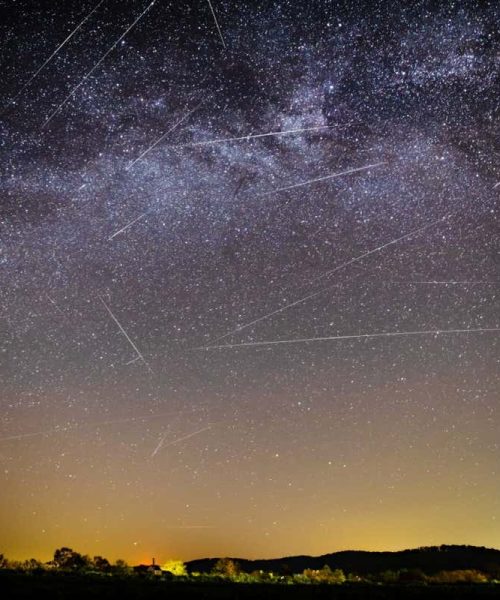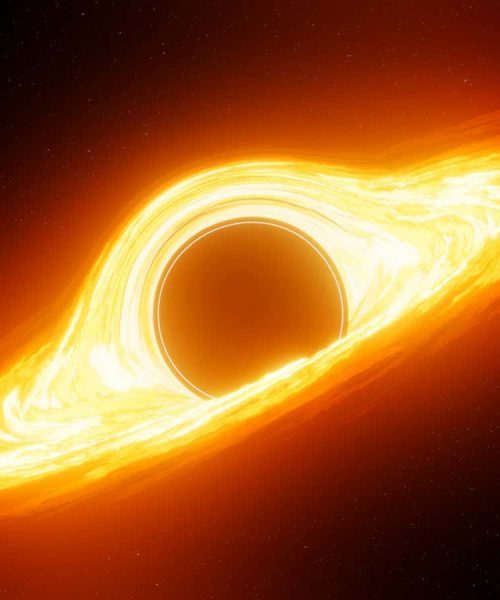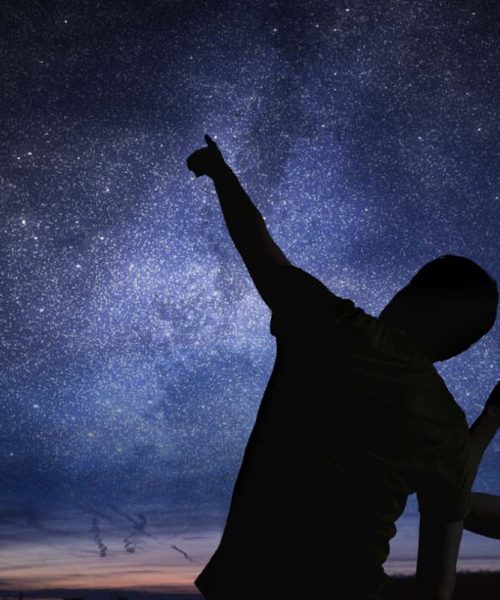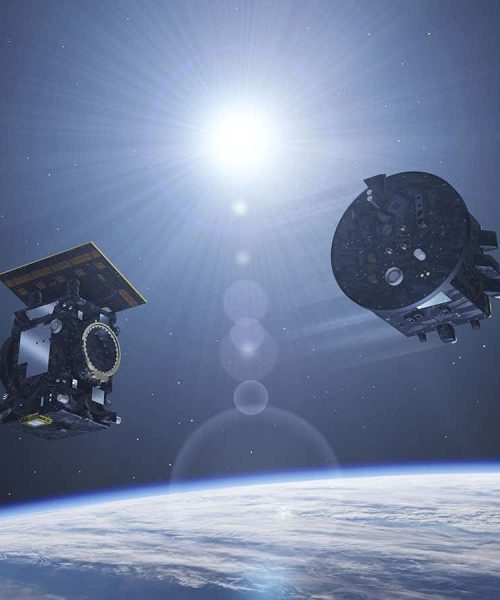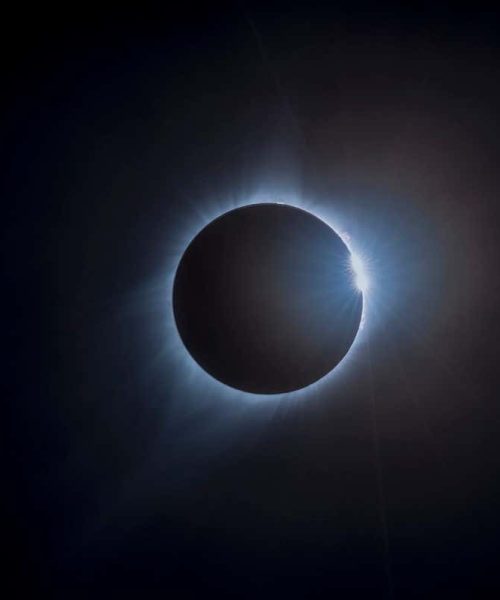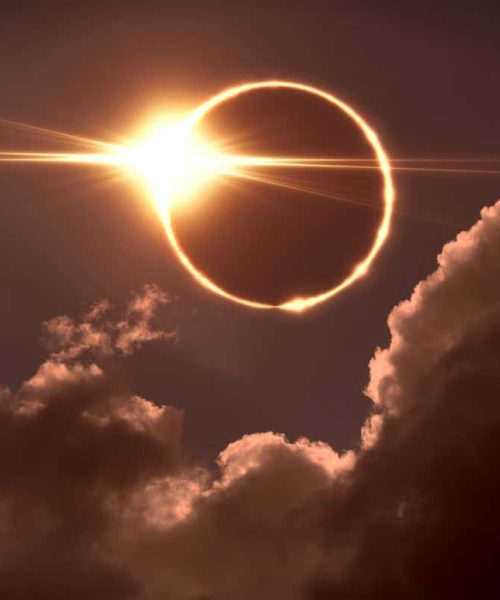Science is filled with imagined realities – beliefs that will turn out to be untrue – and the idea that interstellar objects are simply rocks could be one of them, writes physicist Avi Loeb

An artist’s impression of ‘Oumuamua, passing through the solar system
NASA/European Southern Observatory/M. Kornmesser
The following is an extract from our Lost in Space-Time newsletter. Each month, we hand over the keyboard to a physicist or two to tell you about fascinating ideas from their corner of the universe. You can sign up for Lost in Space-Time for free here.
Imagined realities are addictive mental drugs. These belief systems can cure the frustration brought about by actual reality and, like a physical drug, can ease pain or make difficult situations more tolerable. They can bring communities with a shared spiritual belief together or can lead to terrorism and hatred. They satisfy an emotional need. If that need is to demonstrate mathematical virtuosity with minimal constraints from the physical world, then the imagined reality could involve extra dimensions or the multiverse. If the need is to be liked on social media, then it could involve trumpeting populist views.
Science is filled with imagined realities. Nature is one version of reality among the many possible ones. The scientific method, pioneered by Galileo Galilei, calls for an independent arbitrator to help us figure out reality – namely, experimental data. Such data often limits the range of possibilities, helping us get closer to the real world. It can also rule out beautiful ideas that are not realised in nature. Truth and beauty are not necessarily the same. Finding out the truth requires submission to experimental evidence and giving up on wishful thinking. But laying the head of wishful thinking under the guillotine of data is stubbornly difficult for most people, irrespective of whether they are engaged in politics, spirituality or science.
Advertisement
The most striking examples in science are those where evidence indicated that the prevailing paradigm was an imagined reality. Such was the notion that the sun is made of the same material as the earth, until Cecilia Payne-Gaposchkin realised that it is made mostly of hydrogen. The chair of her PhD committee, Henry Norris Russell, had attempted to dissuade her from including this statement in her thesis. Such too was the notion that the universe is made of the same matter as the sun, until Fritz Zwicky realised that the dominant constituent is dark matter. His discovery was ridiculed for 40 years by mainstream astronomers. And such was the notion of causality in classical physics until quantum mechanical entanglement was realised. Albert Einstein resisted it as “spooky action at a distance”.
And such too may be the notion that interstellar objects are simply natural rocks, like hydrogen or nitrogen icebergs. Or this could be yet another imagined reality set to fall.
The Galileo Project, which I lead, is ready to find out. Just like how the Search for Extraterrestrial Intelligence (SETI) has used solid science to scan the universe and listen in for potential electromagnetic signals that could indicate advanced extraterrestrial life, the Galileo Project will do the same but with a focus on physical objects.
Our plan is split into two complementary areas of study. Firstly, we want to get a better understanding of unexplained areal phenomena (UAPs). The US Office of the Director of National Intelligence has gathered hundreds of examples of UAPs and has only managed to explain a fraction of them. And secondly, we are going to investigate the origins of interstellar objects (ISOs) that appear different to typical asteroids and comets. When `Oumuamua – the first interstellar object detected while passing through our solar system – was spotted in 2017, it soon became clear it was different to any other object we’ve seen. Its shape, trajectory and reflectivity all made it particularly unusual. But little data was collected about it in the short time it was visible to our telescopes. The next time one comes along, the Galileo Project will be ready to take a closer look.
In the spirit of scientists like Payne-Gaposchkin and Zwicky, our Galileo Project is collecting new data – our instruments are now watching and listening to the sky. When the next `Oumuamua-like object comes along, we plan to get a high-resolution image of it.
For the love of evidence
Soon we will also conduct an expedition to retrieve the fragments of the first interstellar meteor near Papua New Guinea. CNEOS 2014-01-08 exploded over the Bismarck Sea in 2014, approximately 200 kilometres north of Manus Island. Tiny fragments from it, less than a millimetre in size, should now be resting on the seafloor. Over the course of 10 days, we will use a sled equipped with magnets, cameras and lights to try to collect them. If successful, we will have the first pieces of an interstellar object in our hands. We will carefully analyse them and share the data with the scientific community – data that could shatter many imagined realities.
Imagined realities can consume the oxygen in the room. Galileo was put under house arrest when he challenged the imagined reality of a geocentric world. The best way to maintain a our sanity is to adhere to experimental tests as our guide, first and foremost. Physics is a learning experience, a dialogue with nature rather than a monologue. Our love of nature is not abstract or platonic, but based on a direct physical interaction with it.
Nature is under no obligation to satisfy our emotional needs. Feeling lonely does not imply that we have neighbours. But we can check if we have neighbours by looking through our windows rather than endlessly repeating Enrico Fermi’s question: “where is everybody?”. Nature is also under no obligation to satisfy our intellectual needs. Figuring out the most consequential insight about nature – whether we are alone as a sentient species among the stars – may not require sophisticated mathematical gymnastics. It only requires looking up.
Our egos can lead us to ignore facts that do not flatter us. We would rather be at the centre of the universe as the main actors of the cosmic play. But in reality, Earth moves around the sun, which moves around the centre of the Milky Way, which recedes away from all other galaxies at an accelerated rate. We have arrived on stage at the end of the cosmic play, and we better seek other actors who can tell us what this play is about.
The quest for scientific knowledge should not be focused on us. It is about figuring out the reality around us. Our starting point should be humility, driven by intellectual curiosity and informed by what we already learned. We follow this path as kids, but something goes wrong when we become adults and pretend to know more than we actually know.
There was no bigger expert on the stars than Henry Norris Russell in his time. There was no bigger expert on quantum mechanics than Albert Einstein in his. But both were completely wrong about a fundamental aspect of their craft. Both promoted imagined realities that their mainstream communities supported. To learn something new, we must preserve the sense of wonder that we all started with as kids. Evidence leads to a better relationship with reality. Climate change will occur if we do nothing to fix it, irrespective of our narrative. The sun will boil off all the oceans on Earth even if we all wear goggles that display an imagined reality in which we live comfortably in the metaverse.
Accepting the arbitration of experimental data is a survival mechanism. Natural selection favours those who adapt to the real world. The dinosaurs of the world disappear because they are not humble enough to search the blue skies for new evidence about the existential risks they face in the actual reality.
AviLoeb is the head of the Galileo Project and author of Extraterrestrial:The First Sign of Intelligent Life Beyond Earth.
More on these topics:
